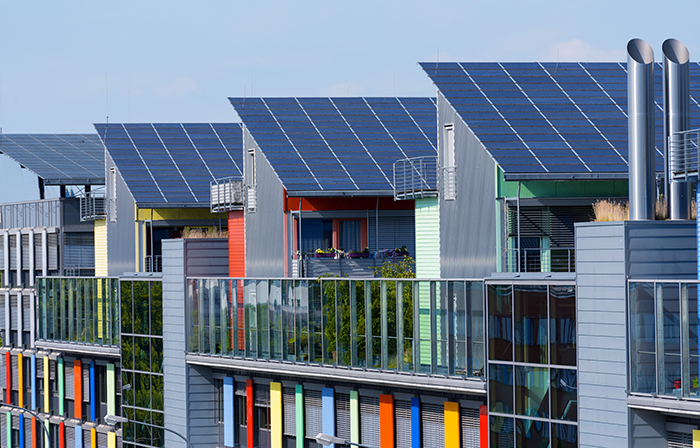 Loading... Please wait...
Loading... Please wait...- Home
- Solaris Blog
- California Mandate Requires Solar Power for New Homes
Products
- Solar Panels
- Solar Panel Kits
- Solar Generators
- Inverters
- Inverter Monitoring
- Inverter Accessories
- Balance of Systems
- Racking and Mounting
- Rails
- Flashings
- Splice Kits
- Stopper Sleeves
- Conduit Mounts
- Attachments
- Brace Assembly
- Base Mount
- Brackets
- Bolts
- Clamps
- Caps
- L-Feet
- Washers
- Skirt
- Lugs
- Tilt Legs
- Hooks
- Stand-Offs
- Ballast Bay
- Top of Pole Mount
- Side of Pole Mount
- Flush Mount Kits
- Ground Mount Kits
- Roof Mount Kits
- Hardware Packages
- Wire Management
- Batteries
- Battery Accessories
- Charge Controllers
- Tools and Supplies
- View All Products
California Mandate Requires Solar Power for New Homes
Posted by Brandi Casey on 16th May 2018

California became the first state to implement a requirement for all new homes to have solar panels on Wednesday (05/09/2018). The unanimous decision by the California Energy Commission has set the timeline for full implementation to take place in two years. The measure is sure to raise the average home cost by thousands of dollars, a figure that state officials say will be offset by lower energy bills.
California has long been a trendsetter for renewable energy, and clean-energy advocates are hopeful that the requirement will gain popularity in states across the country. Among the states that have already been considering implementing the same requirements are currently: New Jersey, Massachusetts and Washington D.C., while Hawaii has made similar mandates regarding solar water heaters.
The requirement may act as a huge step forward in meeting the state’s requirement for 50% noncarbon-producing energy sources by the year 2030. New energy monitoring regulations may offer additional benefits to homeowners utilizing solar systems and battery back-up systems. As more homeowners move towards the grid, storing energy to avoid from grid overload are apparent. The timing is appropriate, given the newest releases in solar energy storage, lithium-ion batteries and other solar specific batteries.
The costs for solar compatible batteries is now significantly lower than in the past due to their better quality and longer battery life. It will further be a welcome relief to homeowners as bulky battery banks were often not a choice due to space. In additional the new batteries are maintenance free, saving the homeowner time and concern over complex watering requirements.
The new requirements allow home builders two options, individual systems on each home, or a shared solar power system that serves a group of homes. Solar racking may be installed through roof-top or ground mount racking. Furthermore, homeowners may own the system outright (the cost of the system included in the home) or lease the system on a monthly basis. To read more about how a solar array can affect your homes value, read our article here.
The current estimate regarding the increased costs of home is between $8,000 to $12,000. Based on a 30-year mortgage, the Energy Commission estimates that the new requirement will add approximately $40 to the average monthly payment. However, the measure will also save homeowners approximately $80 in utilities such as heating, cooling and of course energy.
Currently, California averages roughly 80,000 new homes a year, approximately 15,000 of which are built with a solar array. The new requirement will increase that number by 44% state-wide. The affect this will have on the California solar market is sure to be ground breaking. The size of the new solar arrays will have a minimum size of 2-3 kilowatts, and depend almost exclusively on the size of the home.
While the full effects of the measure are yet to be determined, the early data is promising. As states further adopt measures such as these, we will compare the expected costs and outcomes on an individual level. We are also hopeful that wide spread adaption of new home solar requirements will encourage further solar panel production and expansion. More news to come!



